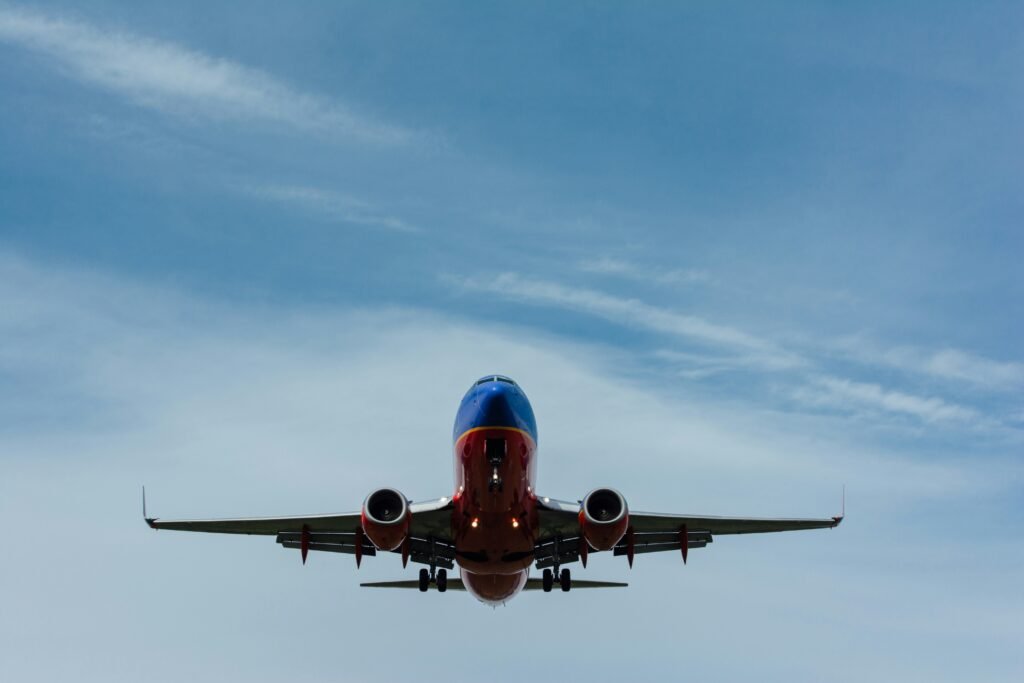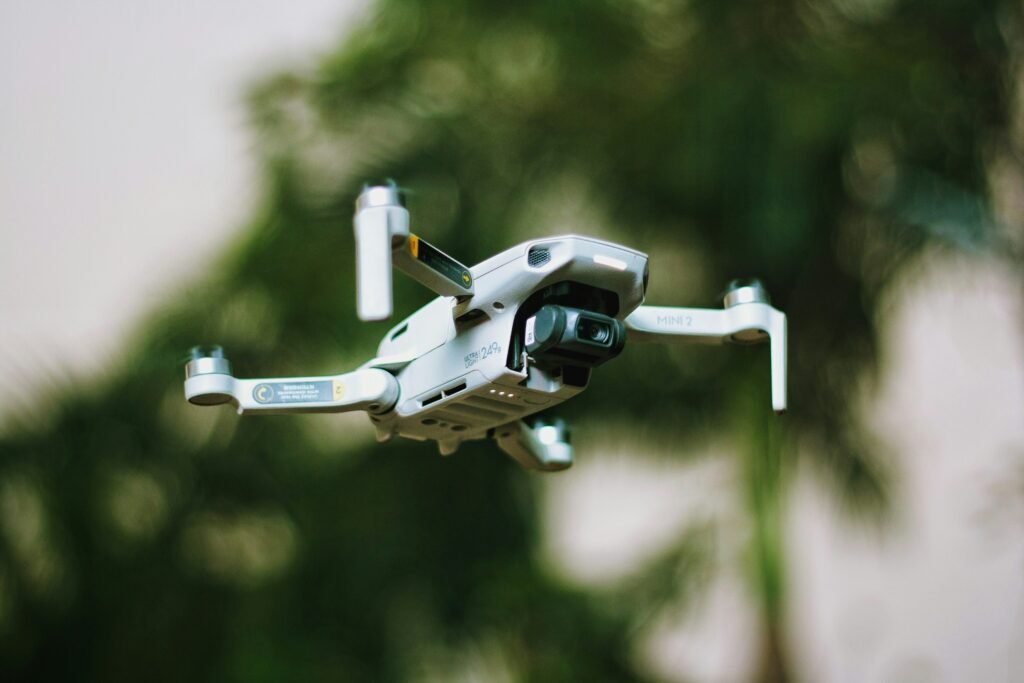
Introduction to Airplane Mechanics
Understanding how airplanes operate is fundamental to appreciating the complexity of flight. The mechanics of an airplane hinge on four primary forces: lift, thrust, drag, and weight. These forces interact continuously during flight, enabling the aircraft to ascend, cruise, and descend effectively. Each component plays a distinct role in ensuring the performance and stability of the airplane.
Lift, generated primarily by the wings, counteracts the gravitational force of weight. As air flows over the wing, its shape causes the air pressure above the wing to decrease while the pressure below increases, thus generating upward lift. This phenomenon is grounded in Bernoulli’s principle and Newton’s third law of motion, which states that for every action, there is an equal and opposite reaction. Therefore, the design of the wing, known as the airfoil, is crucial in optimizing lift.
Thrust, provided by engines or propellers, propels the airplane forward and is essential for generating lift. The engines must produce sufficient thrust to overcome drag, which is the resistance an airplane encounters as it moves through the atmosphere. Drag is influenced by numerous factors, including the aircraft’s shape, speed, and surface texture. To enhance aerodynamic efficiency, engineers strive to minimize drag through sleek designs and advanced materials.
The interplay of these forces creates a dynamic environment where pilots must navigate the complexities of flight. Weight, dependent on the aircraft’s structure, payload, and fuel, must be balanced with lift for successful takeoffs and landings. Aerodynamics, the study of how air interacts with solid objects, plays a vital role in understanding these principles. Different flight conditions, such as altitude and weather, can also significantly impact the aircraft’s performance.
The Aerodynamics of Flight
Aerodynamics is the study of how air interacts with solid objects, and in the context of aviation, it is paramount for understanding how airplanes achieve flight. At the core of aerodynamics in aviation is the concept of lift, which is generated through the interaction of air with the wings of the aircraft. The wings are designed with a specific shape known as an airfoil, which is crucial for efficient airflow. An airfoil typically has a curved upper surface and a flatter lower surface, which leads to differences in air pressure as air moves over and under the wings.
As an airplane moves through the air, the shape of the airfoil causes the air pressure above the wing to decrease while the pressure below the wing remains higher. This pressure differential results in an upward force known as lift, which is essential for overcoming gravity. The effective generation of lift depends significantly on the angle of attack, which is defined as the angle between the chord line of the wing and the oncoming airflow. When the angle of attack increases, lift increases as well, up to a certain point. If the angle becomes too steep, however, the airflow can separate from the wing’s surface, leading to a stall and a dramatic loss of lift.
The relationship between lift and speed is also vital; as an airplane accelerates, the airspeed increases the dynamic pressure exerted on the wings. Consequently, even at lower angles of attack, speed helps maintain lift throughout various phases of flight. In summary, the mechanics of aerodynamics, encompassing wing design and the angle of attack, are instrumental in facilitating stable flight, allowing airplanes to rise, soar, and navigate through the air with precision.
Essential Components of an Airplane
Understanding the fundamental components of an airplane is crucial for grasping how flight is achieved. Each part of the aircraft plays a vital role in ensuring efficient operation and safety during flight, takeoff, and landing. The primary components of an airplane include the wings, fuselage, tail, engines, and landing gear.
Starting with the wings, they are perhaps the most recognizable part of an airplane. Designed to generate lift, wings are shaped aerodynamically to reduce drag while maximizing airflow. The curvature of the wings, known as airfoil, allows the airplane to rise from the ground as air flows over and under them, creating a pressure difference. This essential function enables an aircraft to ascend and maintain altitude during flight.
The fuselage, which is the main body of the airplane, serves multiple purposes. It houses the cockpit, passenger cabins, cargo space, and various systems necessary for the operation of the aircraft. The fuselage must be designed not only for structural integrity but also for aerodynamic efficiency to minimize drag. The materials used in its construction often include lightweight composites and aluminum, ensuring strength without excessive weight.
The tail, or empennage, consists of horizontal and vertical stabilizers that provide control and stability during flight. The tail’s primary function is to stabilize the airplane and allow for directional control. The elevators, located on the horizontal stabilizer, help control the aircraft’s pitch, while the rudder on the vertical stabilizer aids in controlling yaw, ensuring the airplane maintains its intended flight path.
Further essential to an aircraft’s operation are the engines, which provide the necessary thrust for takeoff and climb. Depending on the aircraft type, engines may range from turbojets to turbofans, each offering different advantages. Finally, the landing gear is critical for safely supporting the aircraft during takeoff, landing, and ground operations. It typically consists of wheels, struts, and brakes, providing stability and control during ground maneuvering.
The Physics Behind Takeoff
The takeoff phase of an aircraft’s flight is a complex process governed by fundamental principles of physics. To achieve successful takeoff, an airplane must generate sufficient lift, which is predominantly achieved through the interaction between its wings and the air. This process begins when the engines produce thrust, propelling the aircraft forward along the runway.
Thrust is generated by the aircraft’s engines, which can be either turbofan or turbojet. As these engines operate, they expel air backward, in accordance with Newton’s third law of motion, generating an equal and opposite reaction that pushes the airplane forward. As the aircraft accelerates, its wings begin to encounter increasing airspeed, crucial for generating lift. The shape and angle of the wings, known as the airfoil design, play a significant role in this process. When air flows over and under the wings, the difference in pressure creates lift, allowing the plane to ascend.
<pseveral a=”” accelerate=”” additionally,=”” affect=”” air=”” aircraft=”” aircraft,=”” altitude,=”” and=”” another=”” as=”” at=”” can=”” cargo,=”” conditions=”” consideration=”” critical=”” density=”” distance=”” during=”” efficiency=”” encompasses=”” environmental=”” factor=”” factors=”” for=”” force,=”” fuel.=”” gain=”” generation=”” greater=”” having=”” heavier=”” important=”” in=”” influence=”” is=”” length=”” lift=”” longer=”” more=”” necessary=”” necessitates=”” of=”” one=”” p=”” passengers,=”” produced=”” provide=”” requires=”” runway;=”” runways=”” speed=”” speed.=”” such=”” takeoff.=”” takeoff.
Ultimately, the successful execution of the takeoff maneuver relies on a delicate balance between thrust, lift, and the weight of the aircraft, alongside the operational constraints introduced by the runway and environmental conditions. Understanding the physics behind this critical phase of flight helps to appreciate the engineering and design considerations that make safe air travel possible.
The Takeoff Procedure: Step-by-Step
The takeoff procedure is a critical phase in aviation that requires careful attention and coordination between pilots and air traffic control (ATC). This procedure can be divided into a series of methodical steps designed to ensure safety and effectiveness during the initial moments of flight.
Initially, prior to takeoff, pilots conduct comprehensive pre-takeoff checks. These checks involve a detailed inspection of the aircraft’s systems, including navigation, communication, and flight controls. The pilots review the flight plan, confirming that all necessary documentation is in place regarding airspace, weather conditions, and performance calculations, which include weight and balance assessments. This preparation is vital to ensure the aircraft is ready for departure and operates within its necessary parameters.
Once these checks are complete, the aircraft begins to taxi towards the departure runway. This phase requires pilots to maintain constant communication with ATC to receive instructions on taxi routes, which helps ensure that the aircraft moves safely among other traffic on the ground. Proper communication is essential as it helps prevent collisions and allows for unimpeded movement towards the runway.
Upon reaching the designated runway, the aircraft lines up, and final checks are performed. At this stage, pilots receive clearance from ATC to take off. The importance of this communication cannot be overstated, as ATC ensures that the runway is clear and safe for takeoff.
Finally, as the aircraft prepares for takeoff, the pilots apply full throttle, transitioning from taxi to flight. The aircraft accelerates down the runway, and upon reaching the required takeoff speed, the pilots pull back on the control column, allowing the aircraft to ascend into the sky. Each of these steps is crucial for executing a successful takeoff.
How Airplanes Achieve and Maintain Cruise
After successfully taking off and climbing to a predetermined altitude, an airplane enters the cruise phase of flight. During this stage, the aircraft operates efficiently, maintaining a consistent altitude and speed over a significant distance. Achieving and sustaining cruise involves a delicate balance of forces, including lift, weight, thrust, and drag.
In cruising flight, an airplane’s lift is generated by the wings, counteracting its weight. The engines produce thrust, propelling the aircraft forward and overcoming drag, which is the resistance faced due to the air. Pilots carefully monitor these forces to ensure the aircraft maintains a level flight path. By achieving a balance between thrust and drag, airplanes can travel long distances while conserving fuel, thereby enhancing energy efficiency. It is during this phase that the aircraft transitions from initial climb to flying at cruising altitude, typically between 30,000 and 40,000 feet.
Autopilot systems play a crucial role in maintaining cruise. These sophisticated systems can automatically regulate altitude, speed, and direction, allowing pilots to focus on broader navigation tasks and ensuring a smooth flight experience. By engaging the autopilot, pilots input specific parameters, including desired altitude and airspeed. The system then adjusts the control surfaces and engine thrust automatically, adhering to these parameters while also accounting for changes in weather conditions or air traffic control directives.
Moreover, navigation is essential during the cruise phase. Modern aircraft utilize various navigational aids, including GPS, to accurately track their position and maintain the intended flight path. Continuous monitoring of these systems ensures that the airplane remains on course, contributing to the overall safety and efficiency of the flight. The cruise phase is paramount, not only for optimizing fuel consumption but also for achieving a serene and controlled flight experience for both passengers and crew.
Landing Mechanics: Preparing for Descent
The descent phase of flight is a critical component of the landing mechanics, where pilots must carefully manage altitude, speed, and navigation to ensure a safe approach to the runway. As the aircraft reaches its cruising altitude, typically between 30,000 and 40,000 feet, pilots begin to calculate the descent profile. This involves precise timing and coordination to align with air traffic control (ATC) instructions, ensuring that the aircraft descends at an optimal angle, typically around three degrees, allowing for a smooth landing.
Pilots initiate the descent by reducing the throttle, which decreases engine power and subsequently lowers altitude. This process is closely monitored, as maintaining an appropriate speed is essential. Pilots use a combination of instrument data, including airspeed indicators and altitude readouts, to maintain control over the aircraft’s descent rate. Speed too high can be dangerous, as it can complicate the landing process, while a slow speed may result in a stall situation. Therefore, a careful balance is crucial during this phase.
Communication with ATC plays a significant role in guiding pilots throughout this process. ATC provides critical information regarding airspace conditions, traffic in the vicinity, and weather updates that may impact the landing approach. Pilots must remain alert and responsive to any adjustments in instructions, including altitude changes or holding patterns if the approach is not clear. The integration of these elements ensures that pilots prepare adequately for an eventual landing, enhancing safety for all aboard.
As the aircraft descends through the cloud layer and approaches the airport, pilots switch their focus to visual cues and the runway layout, preparing for the final stages of the landing process. Mastery of these mechanics not only dictates the smoothness of the landing but is also vital in ensuring the safety of passengers and crew during one of the most complex phases of flight.
The Landing Procedure: A Comprehensive Guide
The landing procedure of an airplane is a critical phase of flight, encompassing several key components to ensure a safe and controlled descent to the runway. Proper execution of this procedure involves the meticulous coordination of the aircraft’s systems and pilot inputs, focusing on final approach, touchdown, deceleration, and the deployment of vital components such as flaps and landing gear.
As the aircraft nears the intended landing site, pilots initiate the final approach. This phase typically begins when the airplane is approximately 20 miles from the runway, allowing sufficient time to configure the aircraft for landing. During this stage, pilots establish the correct descent path by managing airspeed and altitude while continuously monitoring the surrounding environment for adjustments due to wind, traffic, or weather deviations. Flaps are extended incrementally to increase lift at lower speeds, allowing for a steeper descent without an increase in speed. This deployment modifies the aircraft’s aerodynamic properties, which is essential for a smooth landing.
Touchdown occurs when the aircraft makes contact with the runway. Timing is crucial, as pilots must maintain control of the aircraft to achieve the right attitude and speed at the moment of contact. Upon landing, pilots gently lower the nose wheel while bringing the main landing gear in contact with the runway. Following touchdown, the focus shifts to deceleration, where pilots utilize reverse thrust from the engines and brakes to slow the aircraft effectively. The landing gear plays a significant role in shock absorption during the touchdown process, ensuring that the forces experienced by the airframe are minimized.
Throughout this landing procedure, pilots employ careful management of all aircraft systems, combining their technical knowledge with practical skills to achieve a safe and successful landing. The task requires effective communication with air traffic control and strict adherence to established protocols, underscoring the intricacies involved in the aviation process.
Conclusion: The Journey of Flight
Throughout this exploration of airplanes, we have delved into the complex mechanics that underpin the processes of flight, takeoff, and landing. The operation of an aircraft is a remarkable integration of various engineering principles and design practices. From the aerodynamic shapes of wings that facilitate lift to the powerful engines that provide thrust, each component plays a critical role in ensuring successful flight. Understanding these elements enhances our appreciation of the craftsmanship involved in building and operating airplanes.
Moreover, the role of pilots cannot be understated. The skill and training they undergo are vital for navigating the various phases of flight. Pilots are required to possess a deep understanding of aerodynamics, meteorology, and aircraft systems to effectively manage the aircraft in different operational conditions. The training process is rigorous and thorough, ensuring that pilots are well-equipped to handle emergencies and make informed decisions that prioritize passenger safety. Their expertise is essential for a smooth takeoff and an efficient landing, both of which are crucial for safe air travel.
In conclusion, the journey of flight encapsulates not just the thrill of travel, but also the intricate network of technology and human proficiency that allows us to traverse vast distances in the sky. By comprehending the mechanics behind the processes of takeoff and landing, we can appreciate the delicate balance between innovation and skill that characterizes modern aviation. This holistic understanding of airplanes invites us to reflect on the evolution of air travel and the continuous advancements that further enhance safety and efficiency in the skies.



1 thought on “Understanding Airplanes: The Mechanics of Flight, Takeoff, and Landing”